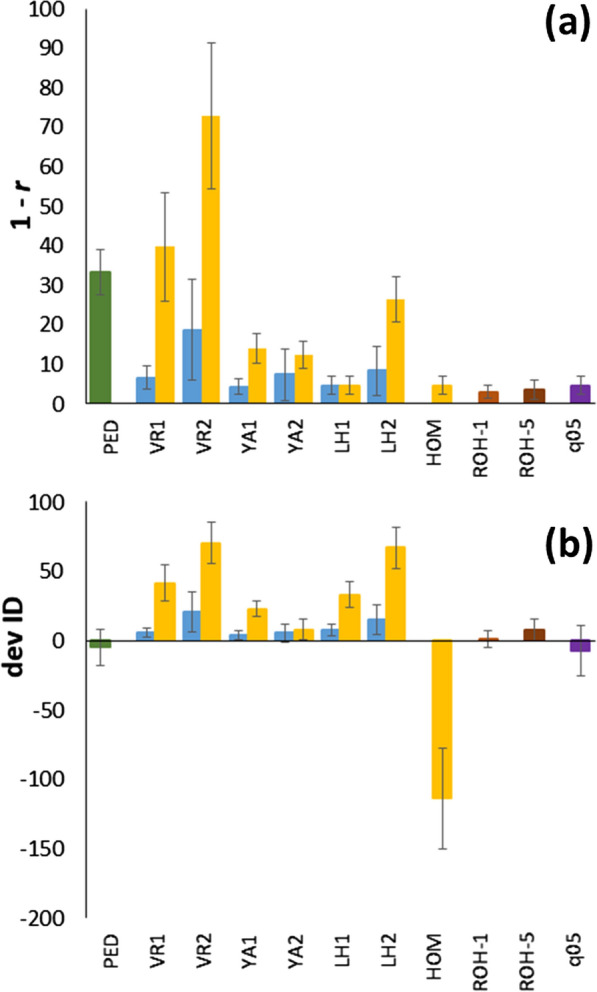Fig. 2.

a Correlation (r), expressed as 1–r (in percentage), of the different estimates of inbreeding with true IBD inbreeding, and b Average difference between estimates of the rate of inbreeding depression (ΔID) and those obtained from true IBD inbreeding. All results in the study from Fig. 1, Additional file 5: Fig. S3, Additional file 6: Fig. S4 and Additional file 10: Fig. S7a–c were averaged (intervals denote 1 standard deviation). The estimates refer to pedigree records (FPED; green bars) and to different marker frequency-based measures (FVR1, FVR2, FYA1, FYA2, FLH1, FLH2, Fq05; see text for definitions), assuming the frequencies of the base generation (blue bars), those of the current generation (yellow bars), or a constant frequency of 0.5 (purple bars). Estimates from runs of homozygosity are shown for fragments larger than 1 Mb (FROH-1) or 5 Mb (FROH-5). Only subscripts of estimators are shown for a better view
